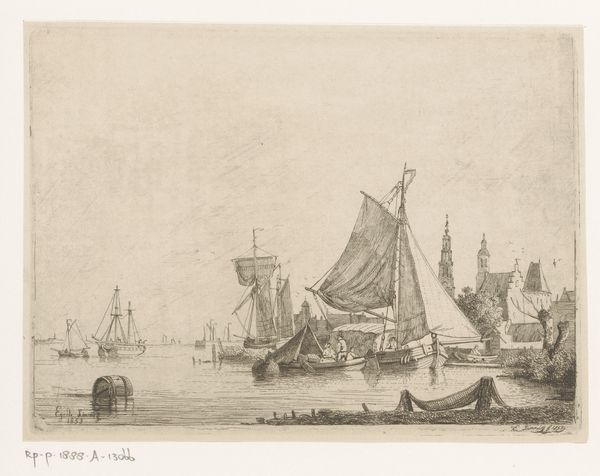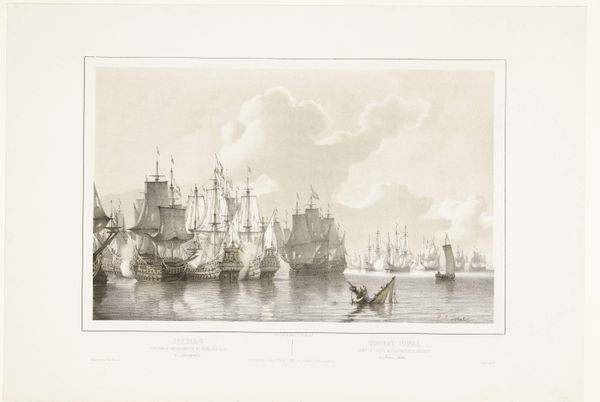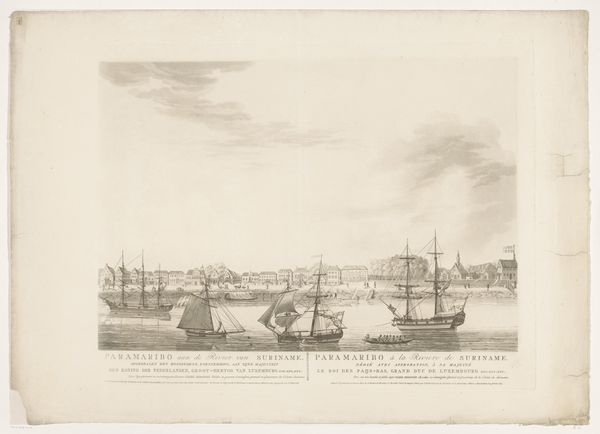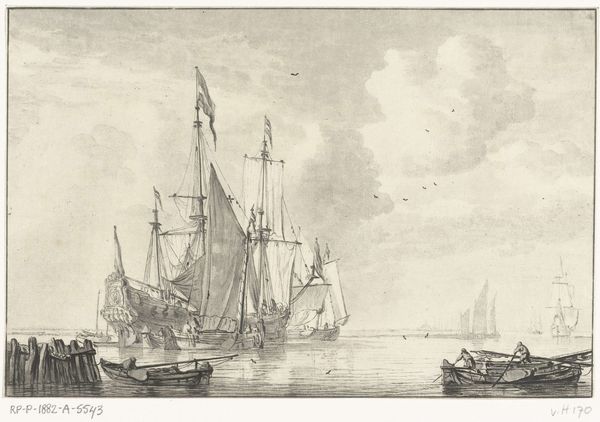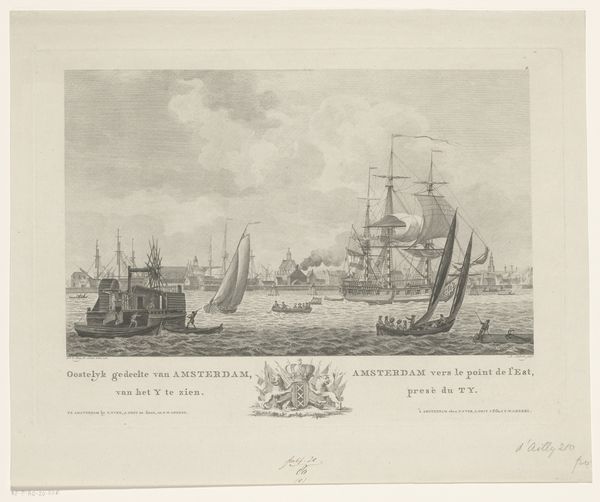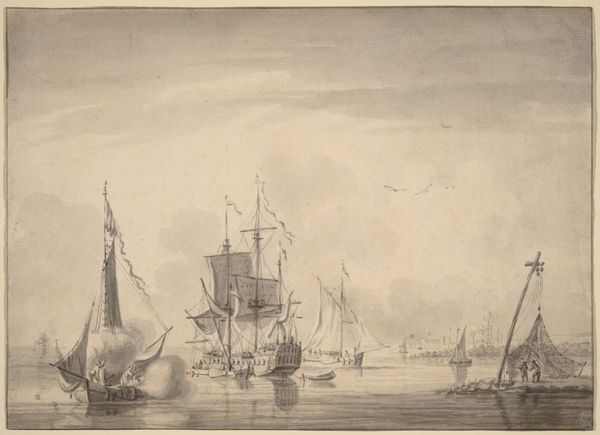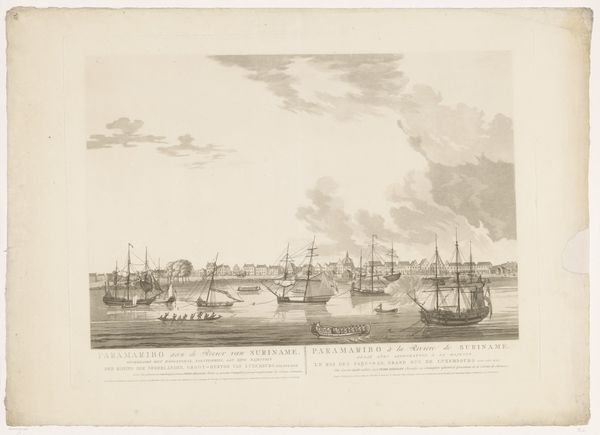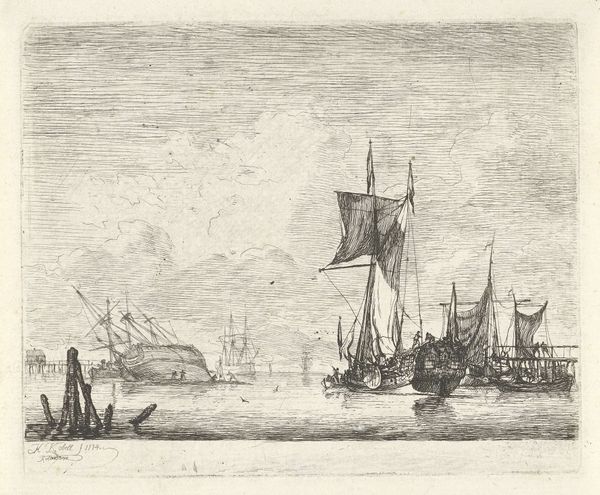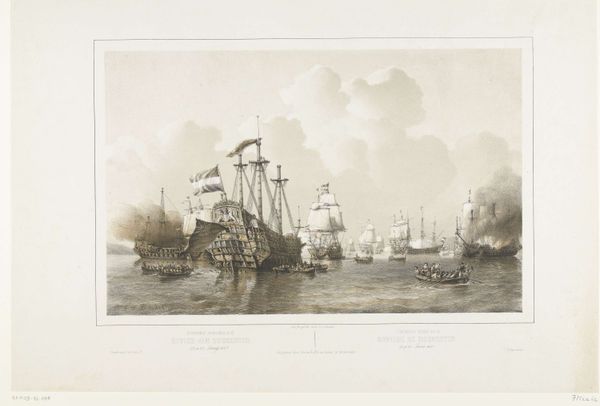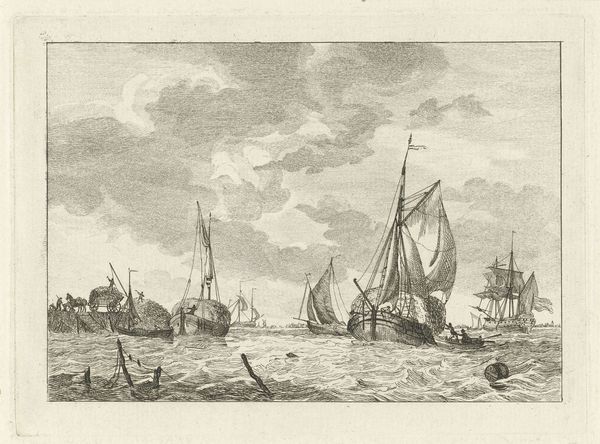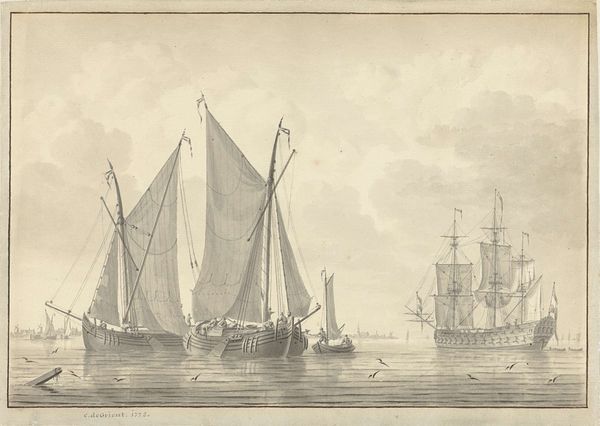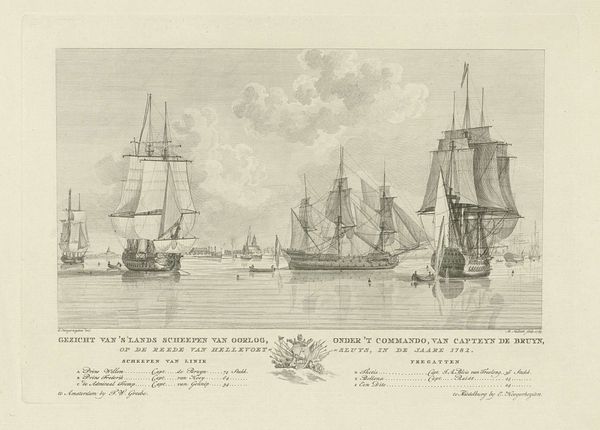
drawing, pencil
#
drawing
#
aged paper
#
light pencil work
#
quirky sketch
#
pencil sketch
#
sketch book
#
landscape
#
personal sketchbook
#
idea generation sketch
#
sketchwork
#
romanticism
#
pencil
#
sketchbook drawing
#
cityscape
#
sketchbook art
Dimensions: height 417 mm, width 528 mm
Copyright: Rijks Museum: Open Domain
Editor: We're looking at "Departure of the Brielle Mobile Militia from Brielle, 1813," a pencil drawing by Theodoor Soeterik, created in 1831. It’s mostly pale grey; I think that its quiet mood comes from this restrained use of materials. What strikes you most about this work? Curator: The drawing’s success lies in the subtle gradations achieved with a limited tonal range. Observe the intricate network of lines that define the ships, figures, and architecture. Soeterik masterfully uses line weight and density to create depth and volume. The linear precision gives the work a documentary feel, doesn’t it? What impact does the aerial perspective have on your experience? Editor: Yes, that perspective is compelling. It’s not quite photographic, but it gives a panoramic view of the scene as if we are up on a hill observing it all from above. What I also find really interesting is how such simple lines still communicate depth of space. Curator: Indeed. The rhythmic repetition of the masts and sails creates a compelling visual cadence, further enhanced by the contrast between the detailed foreground and the hazier background. This strategic arrangement serves to focus attention and unify the composition. How does the drawing's adherence to formal structure enhance or detract from its historical narrative? Editor: I see what you mean; I suppose its formal qualities might give it an objective, distanced feel, but they also highlight the orderliness of the event. I never thought of it that way before. Thank you! Curator: A close examination of artistic elements offers ways of enriching our understanding and aesthetic response. Thank you!
Comments
No comments
Be the first to comment and join the conversation on the ultimate creative platform.
